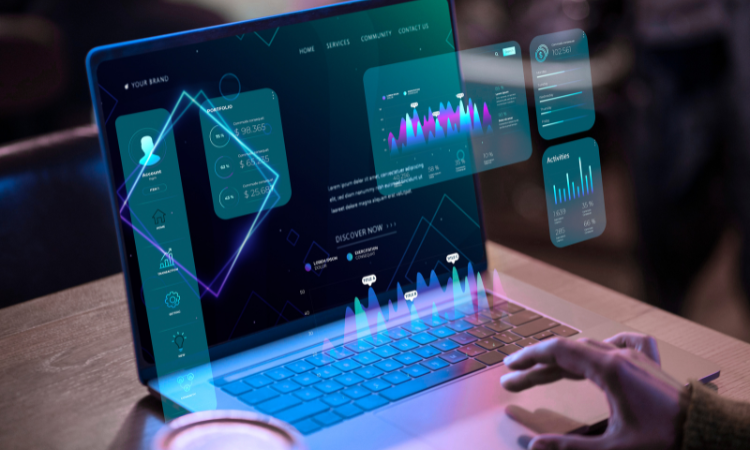Customer churn isn’t just a metric—it’s a revenue killer. Studies show that reducing customer churn by only 5% can increase profits by as much as 95% over five years. On the other hand, acquiring new customers is far more expensive—you may need three new customers to replace the revenue lost from just one who leaves.
The truth is simple: if you’re not tracking churn, you can’t fix it. And without customer churn analysis, you’re likely losing money without realizing it.
The real challenge isn’t recognizing that churn is harmful—it’s detecting the early churn signals before customers walk away. Churn rarely happens in an instant. Customers give clues first: support tickets filled with repeated issues, survey responses with hesitation, changes in customer usage patterns, or lukewarm online reviews. Spotting these warning signs early gives you a competitive advantage.
This is where qualitative analysis for churn detection becomes critical.
While quantitative churn metrics tell you how many customers are leaving, analyzing qualitative data to detect churn explains why. A drop of just 10 points in NPS can increase the customer churn rate by the same percentage—proof that qualitative insights are essential for retaining customers.
In this blog, we’ll explore how to conduct effective churn analysis. You’ll learn how to collect the right churn data, identify at-risk customers through patterns in their feedback, and apply proven methods with real-world examples. The shift from reactive churn management to proactive customer retention begins with listening to what your customers actually say—before they leave.
TL;DR
-
Early churn detection requires going beyond metrics—qualitative analysis helps uncover emotions, unmet expectations, and friction points that numbers alone cannot explain.
-
Collect feedback systematically across surveys, support tickets, reviews, and usage behavior to build a multi-channel early warning system for at-risk customers.
-
Organize and code unstructured feedback to surface recurring patterns, emotional triggers, and hidden churn signals, making analysis scalable and actionable.
-
Link qualitative insights directly to customer journeys and usage data to identify where frustration arises and design targeted retention strategies.
-
Take timely action with interventions like improved onboarding, faster support resolution, proactive renewal campaigns, and win-back programs fueled by churn insights.
-
Schedule a demo with Zonka Feedback to see how AI-powered qualitative analysis transforms customer feedback into actionable churn detection, helping you predict risks early, retain more customers, and drive long-term growth.
Turn Early Churn Signals into Retention Opportunities
Uncover hidden churn triggers in feedback, act fast with insights, and build stronger customer relationships that last.

What is Churn and Why Early Detection Matters
So, what is customer churn? Simply put, it’s the percentage of customers who stop doing business with you over a given period. This single number—your customer churn rate—has a direct impact on revenue, growth, and overall business health. Research from Bain & Company shows that improving customer retention by just 5% can boost profits anywhere from 25% to 95%.
Understanding Customer Churn
Customer churn analysis—also known as customer attrition—tracks the number of customers who leave. That could mean canceling a subscription, switching to a competitor, or no longer purchasing your product or service.
The calculation is simple: divide the number of customers lost in a time period by the number you had at the start, then multiply by 100. For example, if you begin with 1,000 and lose 50, your monthly churn rate is 5%.
There are two main types:
-
Voluntary churn happens when customers choose to leave—often due to price sensitivity, competitor offerings, or poor customer service.
-
Involuntary churn occurs when external issues such as failed payments or discontinued services cause customers to leave unintentionally.
Across industries, the average churn rate sits around 4% (3% voluntary, 1% involuntary). What’s considered “acceptable” varies widely depending on business model and sector.
Why Early Churn Detection Matters for Growth
The cost of churn isn’t just about lost sales. Around 65% of revenue comes from existing customers, while winning new customers costs 5–25x more than keeping the ones you already have. That’s why businesses that can reduce customer churn before it spikes are more likely to achieve sustainable growth.
By detecting at-risk customers early, you buy time to step in with tailored retention efforts. Instead of waiting for them to cancel, you can re-engage them and protect revenue streams.
Churn also erodes customer lifetime value (CLV). For example, if a healthcare provider typically retains patients for ten years, losing one today means losing a decade of recurring revenue.
High churn rates trigger ripple effects:
-
Erode market position as more customers switch to competitors
-
Drive up customer acquisition costs just to maintain revenue
-
Lower employee morale, which can worsen customer experience
-
Damage brand reputation through negative word-of-mouth—unhappy customers tell an average of 22 others
For subscription businesses, early churn detection allows for proactive customer churn prediction and targeted retention programs. By acting on churn data analysis, businesses can adjust to changing customer behavior and build stronger relationships that fuel loyalty.
💡Predicting churn early doesn’t just help you manage risk—it helps you preserve revenue, improve customer loyalty, and build a more profitable business.
Why Customers Churn: Insights Only Qualitative Can Uncover
Numbers tell you how many customers leave, but only qualitative feedback explains why they walk away. Churn isn’t always about price or product—it’s often rooted in emotions, unmet expectations, or friction points that numbers alone can’t reveal.
What Qualitative Analysis Exposes
-
Frustration with complexity: Customers often quit because they can’t complete basic tasks or find workflows confusing.
-
Broken promises: When product expectations don’t match reality, disappointment builds quickly.
-
Feeling ignored: Customers who believe their feedback isn’t valued will seek alternatives where they feel heard.
-
Trust gaps: Billing confusion, unclear policies, or lack of transparency erode confidence, even if the product works.
-
Shifting sentiment over time: Subtle language changes in surveys, reviews, or support tickets—moving from enthusiastic to lukewarm—often signal churn before it happens.
💡Key takeaway: These are issues that quantitative churn metrics can’t reveal. Understanding the emotional story behind churn helps you address the true causes, not just the symptoms.
The Role of Qualitative Analysis in Churn Detection
Behind every churn metric is a human story—frustrations, unmet expectations, and small disappointments that eventually push customers away. Numbers show the outcome, but qualitative analysis for churn detection uncovers the narrative behind it.
How Qualitative Data Exposes Hidden Churn Signals
Most unhappy customers never complain—they simply leave. These “silent exits” make customer churn analytics with qualitative data essential, surfacing problems long before they appear in standard churn metrics.
Qualitative data reflects the real emotions behind customer interactions—whether in support tickets, survey responses, reviews, or social media posts. Instead of just knowing customers are leaving, you uncover exactly why: confusing experiences, unresolved issues, or frustrations with your product or service.
Key churn signals to look for include:
-
Negative sentiment and tone: Language that shows frustration or disappointment
-
Repeated support requests: Multiple tickets for the same issue, signaling poor resolution
-
Emotional triggers: Words that indicate anger, confusion, or unmet expectations
-
Shifting communication patterns: Noticeable changes in frequency, tone, or detail of responses
💡Timing matters: Conversational churn surveys can reduce customer churn by up to 13%. Triggering feedback right after actions like hitting “cancel” captures raw, honest reasons customers leave—making interventions more effective.
Qualitative vs. Quantitative: Key Differences
Quantitative analysis tells you what is happening—churn rate, revenue lost, usage drops. Qualitative analysis explains why it’s happening—what customers felt and why they made the decision to leave.
| Aspect | Qualitative | Quantitative |
| Objective | Explore themes and context behind behavior | Measure and quantify data trends |
| Data type | Text, images, audio | Numbers |
| Research questions | Why, what, and how? | How many, how much, what percentage? |
| Approach | Thematic interpretation, subjective insights | Statistical, objective analysis |
Both approaches add value.
Quantitative data shows scale, but misses the emotional context. For instance, knowing 30% of users abandoned a feature points to an issue; qualitative feedback reveals they found it confusing or frustrating.
The strongest results come from blending both methods. As Forrester Research notes: while churn prediction plugs individual leaks, churn detection for qualitative data helps you design a better bucket altogether.
Combining qualitative and quantitative churn data analysis validates the problem with hard numbers and provides the context to solve it. The result? Actionable insights that turn churn risks into opportunities to improve the overall customer experience.
How to Use Qualitative Analysis for Churn Detection?
Knowing the importance of qualitative data is one thing—using it effectively for customer churn analysis is another. The process involves more than just collecting feedback. To turn insights into action, you need a structured approach.
The framework typically follows five steps:
-
Collect qualitative churn data from multiple sources like churn surveys, support tickets, reviews, and social media.
-
Organize and prepare the data so it’s clean, structured, and ready for analysis.
-
Analyze churn data using methods like thematic coding, sentiment analysis, and identifying emotional triggers.
-
Link churn insights to customer behavior by mapping them across journeys and spotting drop-off points.
-
Take action on churn insights with targeted interventions, improved onboarding, and proactive customer success strategies.
These steps transform churn data analysis into an early-warning system—helping you detect at risk customers before they leave and giving you the opportunity to improve customer retention.
Step 1: Collect the Right Qualitative Data for Churn Detection
Preventing churn begins with disciplined data collection. Even the most advanced tools can’t help if you’re pulling the wrong churn data from the wrong sources—or at the wrong time. Businesses that excel at customer churn analysis don’t wait for complaints; they actively collect insights across multiple touchpoints to build a full picture of the customer experience.
Sources of Qualitative Data
Each source highlights different churn triggers and emotions. A multi-channel approach ensures no signal is missed:
-
Customer surveys (NPS, CSAT, CES) reveal satisfaction and loyalty levels. Customers with high effort scores are 61% less likely to repurchase. Exit surveys at cancellation points deliver 3–5x higher response rates than post-cancellation outreach.
-
Support interactions—tickets, chats, and call recordings—expose frustrations in real time. About 67% of churn is preventable if issues are resolved at first contact. Multiple tickets on the same issue are strong signals of at risk customers.
-
Social media and online reviews provide unfiltered, public opinions. Since 93% of buyers rely on reviews, monitoring them helps you catch churn risks before they escalate. Customers with unresolved complaints are four times more likely to leave.
-
User behavior data (session recordings, heatmaps, feature usage) links activity to churn triggers. Research shows 70% of customers who reduce feature usage churn within 90 days.
-
Conversational surveys, one-on-one interviews, and focus groups add richer context that structured surveys may miss. AI-driven conversational formats especially encourage candid responses.
-
Chat histories and call transcripts hold recurring themes and sentiment shifts that signal rising churn risk.
Choosing the Right Moments
Timing is as important as the channel. Strategic collection moments drive higher response rates and more honest feedback:
-
Critical touchpoints: After onboarding, major interactions, or relationship milestones. Post-support surveys within 24 hours increase responses by 40%.
-
Moments of friction: After error messages, abandoned checkouts, or failed tasks. In-moment surveys deliver 24% higher completion than standard ones.
-
Pre-renewal windows: For subscription businesses, collecting feedback 30–60 days before renewal reduces voluntary churn by up to 30%.
-
Post-churn outreach: Contacting customers within 7 days of cancellation doubles response rates compared to waiting longer.
To make insights actionable, consolidate qualitative and behavioral data into one customer profile, combining:
-
Transactional history (purchases, frequency, product usage)
-
Website engagement (last visit date, pages viewed)
-
Marketing interactions (email opens, clicks)
-
Support activity (tickets raised, resolution speed)
-
Direct feedback (NPS, reviews, survey responses)
📌 Key takeaway: While most consumers read reviews, only a handlful unhappy customers actually leaves one. That’s why proactive collection across surveys, support, and behavioral data is essential. Together, these methods form the foundation of churn data analysis—showing not just who may leave, but why, and giving you the chance to retain them before it’s too late.
Step 2: Organize and Prepare Your Data
Raw qualitative feedback can be messy—scattered across formats, full of irrelevant details, and hard to use. The difference between wasted effort and actionable insights lies in how well you prepare and structure this information.
Cleaning and Structuring Feedback
Your churn predictions are only as strong as the data behind them. If the input is poor, churn data analysis produces unreliable results. Start by isolating what truly matters in customer conversations.
Strip out the noise: greetings and agent scripts in support transcripts, rambling survey responses, or promotional content mixed into social media mentions. Focus only on the feedback that reflects the customer’s real experience.
Clean your churn data systematically:
-
Remove duplicates so no issue is overrepresented
-
Standardize formats across sources for consistent analysis
-
Fix obvious spelling or grammar errors that confuse automated tools
-
Fill small gaps in incomplete responses when context makes meaning clear
-
Eliminate irrelevant content that distracts from churn signals
Even simple spreadsheets work well for organizing basic customer churn analysis. Add columns for customer IDs, feedback sources, and responses. For more advanced work, extract features like product names, dates, issues mentioned, and sentiment indicators—bridging qualitative detail with quantitative clarity.
Tagging and Categorizing Feedback
Once the data is clean, it needs a clear tagging system. Coding segments of text with descriptive labels creates order from chaos and makes patterns easier to spot.
Effective coding enables you to:
-
Link feedback back to original sources
-
Turn raw text into recognizable patterns
-
Make unstructured comments actionable
-
Identify recurring themes across large datasets
For churn detection, journey-based coding works well. Tag feedback by stages—onboarding, product use, billing, or support—to see where expectations fail. This helps identify which parts of the customer journey drive frustration or lead to at risk customers.
💡Pro tip: Keep a “codebook” with definitions, examples, and relationships between tags. This ensures consistency, especially across teams.
And remember, coding is iterative. As you analyze more data, refine categories and uncover deeper insights. The goal isn’t perfection—it’s clarity that turns customer feedback into a system for spotting churn risks before they escalate.
Step 3: Analyze Qualitative Data to Detect Churn
Once feedback is organized, the next step is to read the story it tells. This is where businesses move beyond collecting comments to actually preventing churn. Patterns in conversations, support tickets, and reviews reveal not just who is at risk, but why.
Thematic Analysis: Spotting Patterns
Isolated complaints can be noise, but repeated themes show real problems. Thematic analysis goes beyond word counts to identify the issues driving customer churn analysis.
One review about slow loading may not matter. Ten reviews about it indicate a systematic issue likely to push customers away. Open-ended surveys, reviews, and support logs are ideal for this kind of churn data analysis, because they expose the “why” behind frustrations—confusing navigation, slow response times, or missing features.
Benefits of thematic analysis:
-
Highlights systematic issues rather than random complaints
-
Surfaces what customers truly value and what builds loyalty
-
Helps prioritize fixes by frequency and impact
-
Turns scattered feedback into clear, actionable categories
Sentiment Analysis: Reading Between the Lines
Customers rarely say “I’m unhappy” outright. Sentiment analysis interprets tone and language to uncover satisfaction levels.
A neutral line like “I guess the feature works fine” carries very different meaning than “This feature is exactly what I needed.” While survey scores may look similar, the sentiment reveals a difference in loyalty.
Tracking sentiment across chats, surveys, social media, and reviews often shows warning signs weeks before churn. Companies applying this technique report tangible results—for example, reducing churn by 25% with sentiment scoring.
Warning signs include:
-
Growing negativity in support tickets
-
Survey responses shifting from excited to lukewarm
-
Ambivalent phrases like “it’s fine, I guess” that show disengagement
Emotional Triggers and Friction Points
Some emotions predict churn far better than others. Anger, disappointment, or distrust raise churn risk up to 4x compared to neutral customers.
High-risk triggers include:
-
Frustration with product complexity
-
Disappointment from unmet promises
-
Feeling undervalued or ignored
-
Fear about reliability or lack of transparency
Subtle signals also matter in emotion detection: detailed feedback shrinking to one-liners, tone shifting from enthusiastic to neutral, or less frequent engagement. These are early churn markers most metrics miss.
The best churn prevention combines all three approaches: thematic analysis to find issues, sentiment analysis to gauge feelings, and emotional trigger detection to identify at risk customers who need immediate attention.
Step 4: Link Churn Insights to Customer Behavior
Qualitative analysis becomes powerful when tied to customer behavior. Feedback alone shows sentiment, but pairing it with actual usage creates a framework that not only predicts churn, but explains where and why it happens.
Mapping Feedback to the Customer Journey
Overlaying qualitative insights onto journey maps turns static visuals into emotional blueprints. This helps show exactly where the customer experience breaks down.
To do this:
-
Map out all major touchpoints where customers interact with your product or service
-
Layer in sentiment trends at each stage to track emotional shifts
-
Flag steep sentiment drops as friction points needing immediate attention
-
Mark pain points directly on the journey map to connect them to the right interaction
This approach of customer journey mapping uncovers what’s often called “sawtooth sentiment”—dramatic ups and downs that wear customers down long before they consciously decide to leave. Churn usually results from accumulated friction, not a single bad moment.
Spotting Drop-Offs and Usage Gaps
High drop-off rates signal churn risks. When customers abandon tasks in critical areas—like checkout or form completion—it highlights severe friction points.
By combining churn data analysis with behavioral tools like funnels and session recordings, you can identify frustration signals such as rage clicks or repeated navigation loops. The numbers show where customers leave; the feedback explains why.
Breaking down drop-offs by customer segments—for example, desktop vs. mobile users—uncovers unique challenges for different groups. Comparing power user journeys to those who struggle also reveals which behaviors correlate with long-term loyalty.
A practical tactic is running in-session surveys at these drop-off points. Asking for feedback at the moment frustration occurs delivers real-time context. Companies using this method have reduced churn by up to 13%.
Together, these techniques give you a complete view of churn: not just who is leaving, but the specific triggers behind their decision. With this clarity, you can fix friction points before they push more customers away.
Step 5: Take Action Based on Churn Insights
Insights only matter if they lead to action. Preventing churn isn’t about knowing who might leave—it’s about using that knowledge to intervene at the right time.
Designing Interventions for At-Risk Customers
Effective customer success teams focus on leading signals: declining product usage, rising support requests, skipped milestones, or negative sentiment. Acting early makes all the difference.
Best practices include:
-
Holding regular reviews to discuss at risk customers and assign ownership
-
Building playbooks that outline specific steps for each churn signal
-
Tracking intervention results and refining strategies over time
For high-value accounts, executive involvement adds weight to outreach. Extra support services or personal calls can demonstrate commitment. Personalization is critical—customers who feel heard are more likely to stay.
💡Key takeaway: Proactive intervention works because it addresses problems while customers are still invested. Waiting until they’ve already decided to leave makes recovery much harder.
Actions You Can Take Based on Churn Insights
Here are practical ways to convert churn signals into measurable retention efforts:
-
Re-engage at risk customers: Send personalized check-ins, schedule success calls, or use in-app nudges when churn data shows usage decline.
-
Fix onboarding pain points: Address feedback about confusing setup with guided walkthroughs, tutorials, or tailored onboarding flows for different customer segments.
-
Strengthen support processes: If churn signals come from repeated tickets, create escalation paths, retrain agents, and resolve issues at first contact.
-
Close the feedback loop: Respond to surveys and reviews with follow-ups that acknowledge concerns and show improvements. Always close the feedback loop. Customers who feel heard are more loyal.
-
Prioritize product improvements: Use churn data analysis to identify recurring pain points—like billing confusion, slow performance, or missing features—and make them roadmap priorities.
-
Protect high-value customers: Offer dedicated account management, proactive success reviews, or custom solutions for strategic accounts at churn risk.
-
Run proactive renewal campaigns: For subscription models, act 30–60 days before renewal with incentives, added training, or personalized offers.
-
Win back churned customers: Exit survey insights can fuel win-back campaigns that highlight feature fixes, pricing adjustments, or loyalty rewards.
Tactical Retention Plays You Can Run Immediately
Beyond strategic processes, here are concrete actions customer-facing teams can take when churn signals appear:
-
Improve support responsiveness: Shorten resolution times by setting stricter SLAs, adding self-service options, or enabling live chat for urgent cases. Faster fixes reduce frustration.
-
Offer personalized retention incentives: Provide discounts, service credits, or premium features to customers showing churn risk—tailored to their usage patterns or business value.
-
Create “save offers” at cancellation points: When customers click “cancel,” trigger an in-app flow that offers alternatives—like pausing subscriptions, switching to a lighter plan, or adding free onboarding support.
-
Proactively escalate unresolved issues: If a customer logs multiple tickets on the same problem, route them to a senior support manager or success rep before they churn.
-
Launch education campaigns: Use webinars, tutorials, and training emails to show customers how to get more value from underused features. Customers who see ROI stay longer.
-
Run loyalty programs: Reward long-term customers with exclusive perks, early access, or recognition to strengthen emotional connection and reduce churn risk.
-
Conduct churn interviews: Reach out to recently churned customers with a quick survey or call. Their feedback informs win-back campaigns and highlights fixes for future customers.
💡Pro tip: Mix short-term plays (like discounts or escalation) with long-term fixes (like product improvements and loyalty programs). This balance addresses immediate churn risks while strengthening overall retention.
Conclusion
Customer churn detection isn’t about predicting losses—it’s about preventing them. The steps outlined in this guide show how qualitative analysis turns scattered customer voices into a structured early warning system.
Instead of reacting after customers leave, winning companies act earlier. They listen for emotional signals, connect them to the customer journey, and intervene before dissatisfaction escalates into churn. This shift—from reactive firefighting to proactive retention—preserves revenue and builds stronger relationships.
Your advantage doesn’t come from advanced tools alone, but from how quickly you use insights. Engaging at-risk customers with timely actions, prioritizing fixes based on real feedback, and closing the loop with clear communication are what separate companies that reduce churn from those that struggle.
The most successful businesses don’t just track customer sentiment—they influence it. Mastering qualitative analysis for churn detection helps you move from defense to offense: retaining more customers, growing loyalty, and protecting long-term value.
The signals are already there in support tickets, reviews, and surveys. The question is—are you listening?
How Zonka Feedback Helps Reduce Churn
Zonka Feedback makes it easier for businesses to detect and prevent churn by combining multi-channel feedback collection with AI-powered analysis. From surveys and support tickets to reviews and in-app feedback, Zonka helps you capture customer sentiment at every touchpoint.
With features like thematic analysis, sentiment detection, churn risk alerts, and role-based dashboards, you don’t just see who might leave—you understand why. This allows customer success teams to act faster, personalize outreach, and close the feedback loop effectively.
Whether you’re in SaaS, retail, healthcare, or BFSI, Zonka Feedback turns scattered customer voices into actionable insights—helping you reduce churn, retain high-value customers, and build long-term loyalty. Schedule a demo to talk to our expert CX consultants and understand how you can reduce customer churn using qualitative customer feedback.










